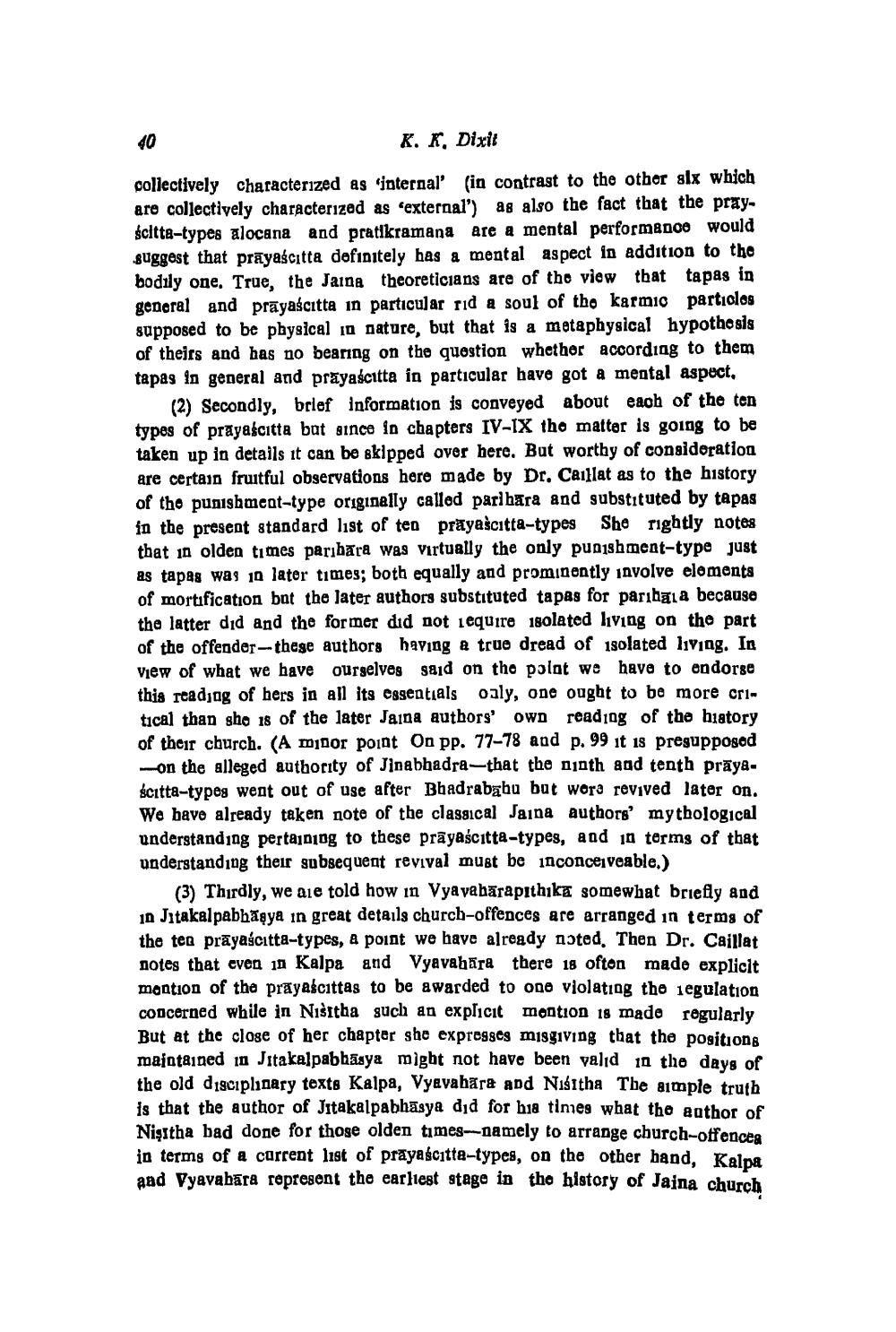________________
40
K. K, Dixit
collectively characterized as internal (in contrast to the other slx which are collectively characterized as 'external') as also the fact that the prayścltta-types alocana and pratikramana are a mental performance would suggest that prayascitta definitely has a mental aspect in addition to the bodily one. True, the Jaina theoreticians are of the view that tapas in general and prayascitta in particular rid a soul of tho karmio particles supposed to be physical in nature, but that is a metaphysical hypothesis of theirs and has no bearing on the question whether according to them tapas in general and prayascitta in particular have got a mental aspect,
(2) Secondly, brief information is conveyed about each of the ten types of prayascitta bat since in chapters IV-IX the matter is going to be taken up in details it can be skipped over here. But worthy of consideration are certain fruitful observations here made by Dr. Caillat as to the history of the punishment-type originally called paribara and substituted by tapas in the present standard list of ten prāyascitta-types She rightly notes that in olden times parıbāra was Virtually the only punishment-type just as tapag was 10 later times; both equally and prominently involve elements of mortification but the later authors substituted tapas for parıbaia because the latter did and the former did not require isolated living on the part of the offender--these authors having a true dread of 1solated living. In view of what we have ourselves gaid on the polat we have to endorse this readjag of hers in all its essentials oaly, one ought to be more critical than she 18 of the later Jaina authors' own reading of the history of their church. (A minor point On pp. 77-78 and p. 99 it is preguppogod -on the alleged authority of Jinabhadra-that the ninth and tenth prāya. Ścitta-typeg went out of use after Bhadrababu but wora revived later on. We have already taken note of the classical Jaina authors' mythological understanding pertajning to these prāyaścıtta-types, and in terms of that understanding their subsequent revival must be inconceiveable.)
(3) Thirdly, we are told how in Vyavabārapithika somewhat briefly and in Jitakalpabhāęya in great details church-offences are arranged in terms of the ten prayascitta-types, a point we have already noted. Then Dr. Caillat notes that even in Kalpa and Vyavahara there 18 ofton made explicit mention of the prayascittas to be awarded to ono violating the iegulation concerned while in Nišitha such an explicit mention 18 made regularly But at the close of her chapter she expresses misgiving that the positions majatained in Jitakalpabhāsya might not have been valid in the days of the old d19ciplinary texts Kalpa, Vyevabasa and Niśitha The aimple truth is that the author of Jitakalpabhasya did for bus tinies what the author of Nişıtha bad done for thoge olden times--namely to arrange church-offences in terms of a corrent list of prayascitta-types, on the other hand, Kalna aad Vyavabara represent the earliest stage in the history of Jaina church




